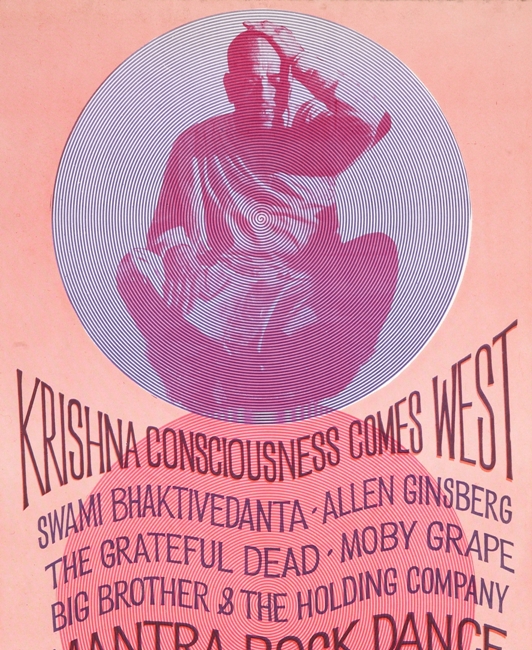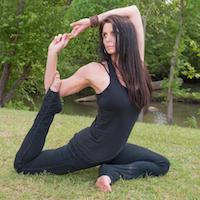
“Chanting is a way of getting in touch with yourself. It’s an opening of the heart and letting go of the mind and thoughts. It deepens the channel of grace, and it’s a way of being present in the moment.” ~ Krishna Das
~
My first experience with Bhakti yoga was at the Sivananda Ashram in the Bahamas several years ago.
Two months prior to my visit, I had separated from my husband of 13 years. Knowing that I needed to get away and practice some self-care, I found the ashram while searching the internet.
I had no idea where I was going, only that it was a yoga retreat, so as a Southern girl raised in a conservation Christian environment, I was in for a life-changing experience.
Taking the visitor’s tour of the ashram with Issa, one of the teachers, I found myself in the temple—the altar reflecting all the great masters of all religions, including Jesus. My Southern brain could relax and I could breathe, knowing that my presence there may not completely condemn me to hell, as my Christian upbringing had conditioned me to believe. I knew I had stumbled upon something completely contradictory to the way I was raised, but instead of judging and running, I decided to embrace what was before me and just be.
My visit there introduced me to satsang (sitting with a guru) and kirtan (the yoga of chant), which are major practices of the Bhakti path. The chanting was just short of magical, leaving me feeling blissful, aware, and energized. As I watched the participants get lost in the chanting, I was moved to join but held back, my inhibitions not fully dissolving.
However, I have been in love with Bhakti yoga ever since.
I now visit the ashram for the Yoga of Chant Retreat with Krishna Das when my schedule allows, and it has become a large part of my personal yoga practice and my yoga teaching.
Bhakti yoga is the dominant yogic path for those who are emotional in nature. Although that classification includes all of us (we are all emotional beings), some of us are a little more emotional than others. Bhakti yoga involves transmuting all we do and all the emotions we feel into love toward the God of our understanding. Since God lives in us all, Bhakti yoga is also about loving your fellow man and making an effort to be mindful of this love in every waking moment.
Just like our asana practice is always evolving, Bhakti yoga is also an ever-changing and ever-growing practice. Even though Bhakti may not be our dominant yogic path, its incorporation is still important in our yoga journey. There are many ways that a yogi can incorporate Bhakti yogi: he may find himself creating music, attending local kirtan sessions, developing more of an interest in Sanskrit, incorporating more rhythm, music, and mantras in his practice and teaching, and even taking trainings that focus exclusively on practicing and teaching Bhakti yoga.
Creating music and participating in kirtan:
Creating music is one of the easiest ways to incorporate Bhakti into our practice. Efforts can be as intense as learning to play a harmonium or a sitar, or as simple as picking up a maraca and shaking it during a chanting session.
At the ashram, a box of instruments is brought out and anyone who desires—whether they’re musically talented or not—can pick one up and get lost in the rhythm. And of course, chanting and singing are available to anyone who wants to join, regardless of skill. Call and response chanting, such as Krishna Das uses, is a great way to start. Often, the words to the chants will be passed out so the participants know how to respond. In this fashion, the audience just parrots back the chant. There is a way for anyone on any level to participate. You may even find yourself up and dancing blissfully.
Sanskrit (and no Sanskrit):
Many chants are in the dead language of Sanskrit.
One of the beautiful aspects of Sanskrit is that most of us do not know what we are chanting. As a meditative practice, we can get lost in the chant when we aren’t focusing so much on the lyrics but more on the rhythm and repetition.
Another negative about English words in a chant is that they can trigger stressful thoughts. As I write this, I am listening to Snatam Kaur’s “Longtime Sun.” Case in point: as I listen to her, I am thinking about running through a field with the sun on my back. Even though the thought is a peaceful one, I am still thinking. While this mantra is beautiful, it is influencing the generation of thought; sometimes chanting in a language we don’t understand will preclude us from thinking. In fact, the use of Sanskrit can propel us into a trance-like state where we find ourselves in the present moment, forgetting those external stressors that rob us of our serenity. You may even find yourself showing more of an interest in learning Sanskrit and expanding your knowledge of it.
Incorporating more Bhakti in your asana, pranayama, and meditative limbs:
As a person who takes her yoga teacher trainings to heart, I found that Bhakti yoga training with Michael Johnson at Asheville Yoga Center was one of the most influential and transformational trainings affecting my personal and teaching practices.
Perhaps the most useful application of this training was the practice of linking rhythm, breath, and movement. The rhythms that Michael creates are around 108 bpm, and they help the practitioner focus, slow down, and take deep yogic breaths. Once the yogi has the breath and rhythm synchronized, she can begin to incorporate the yoga postures. The result is a moving meditation where she becomes lost in the rhythm.
As a trauma-informed yoga instructor who works with prisoners, college students, those in recovery, and at-risk youth, I have found that most people have lost the ability to take full, deep breaths. The rhythm helps us all get in touch with our breathing and our bodily sensations. Because of the challenges and stressors of life and even traumatic occurrences, we often find ourselves in a reactive, rushed state of mind.
Re-learning how to breathe can help us reconnect with our bodies and minds and fall into a deeper meditative state. For those who find themselves uncomfortable chanting the names of Hindu deities, rhythm is secular in nature and an excellent substitute compatible with any religion. I find this especially useful in schools where chanting might violate the separation of church and state.
Bhakti yoga is perhaps the one path that is easily accessible to all people. In fact, the Bhaki description on the Sivananda website is the shortest of the four limbs, showing the simplicity of its practice. Most people love music and rhythm, and anyone can participate regardless of skill level.
Showing up is the first step to engaging in its practice. In fact, one simple way of incorporating it into our day is creating a playlist of kirtan artists and listening when the need arises.
~
Author: Angela Still
Image: Wikimedia Commons
Editor: Catherine Monkman
Copy Editor: Lieselle Davidson
Social Editor: Lieselle Davidson








Read 0 comments and reply